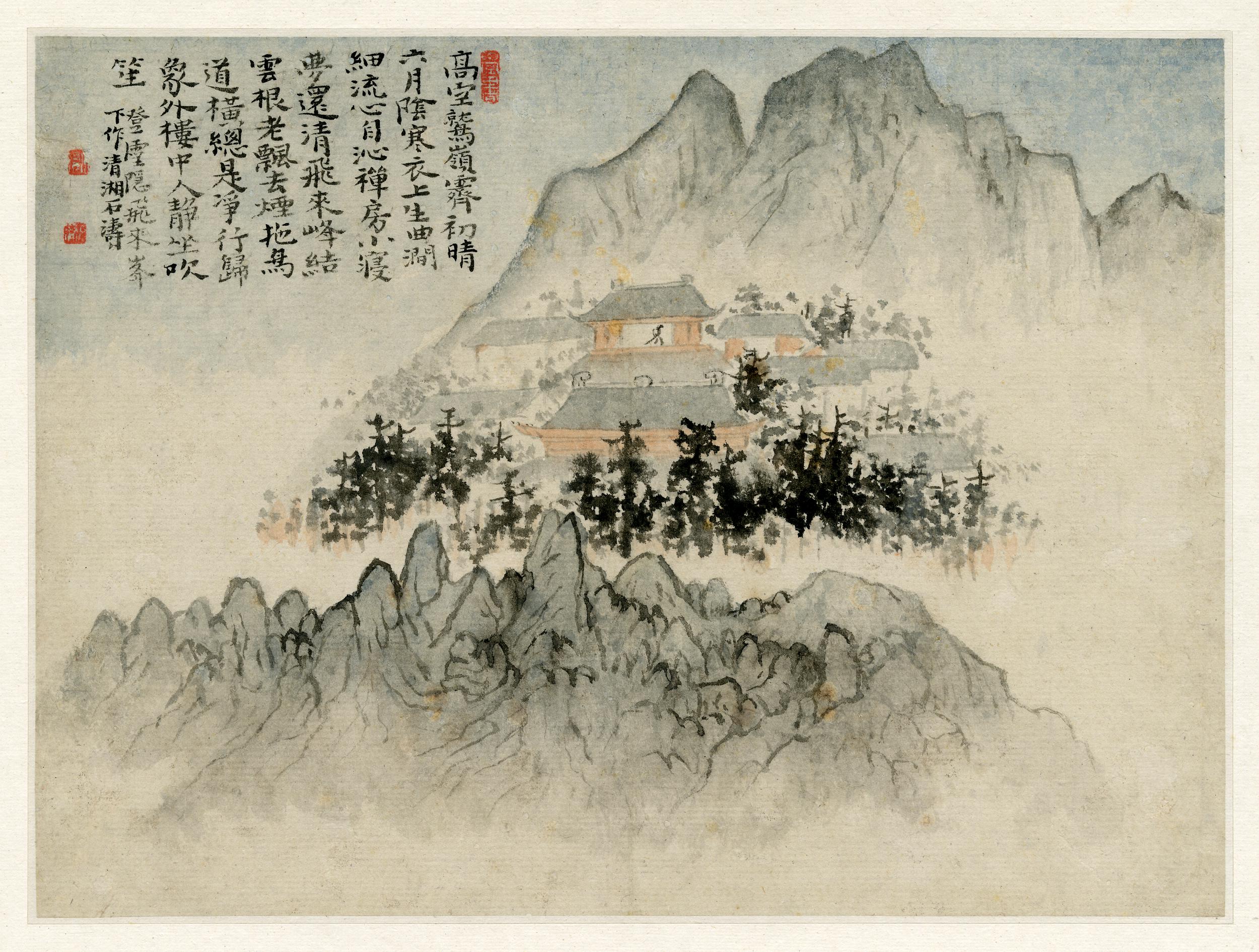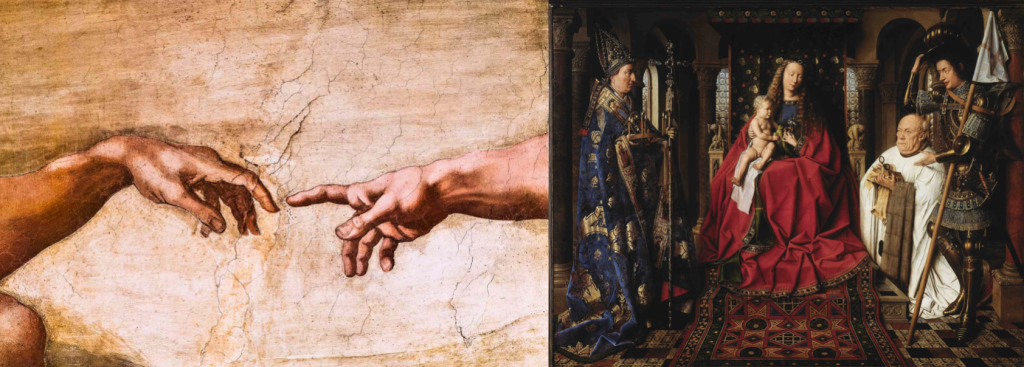One way to gain insight into the current directions of art historical study is to view them as providing alternatives to the prevailing approach of early modern art historians. Figures like Wölfflin and Panofsky, who were highly influential in the field, primarily focused their attention and developed their modes of analysis about the art of the Italian Renaissance. Given Panofsky’s significant influence within and beyond art history and the explicit manner in which his writings articulate his assumptions, he serves as a representative example of a broader phenomenon.
Wölfflin and Panofsky were instrumental in shaping the methodologies and perspectives that came to dominate art historical inquiry. Their emphasis on the Italian Renaissance as a central subject of study reflected a broader belief in the exceptional nature of this period. The art of the Italian Renaissance was regarded as a pinnacle of human achievement, embodying ideals of beauty, harmony, and rationality. This perspective informed their approaches to analysing art and their understanding of artistic development throughout history.
Panofsky, in particular, provided a framework for interpreting art through his iconographic analysis. By uncovering hidden symbols and deciphering their meanings, he aimed to reveal the intellectual and cultural contexts in which artworks were produced. His work emphasised the interplay between images and ideas, highlighting the intricate relationships between art and thought. Panofsky’s approach was grounded in a deep appreciation for the complexity and richness of the Italian Renaissance, and his writings served as a guide for subsequent generations of art historians.
However, as the field of art history evolved, scholars began to question the dominance of the Italian Renaissance as the primary focus of study. They recognised the need to broaden the scope of inquiry and engage with diverse artistic traditions across different periods and regions. This shift was driven by a desire to explore the multiplicity of artistic expressions and challenge the notion of a singular artistic canon.
Today, art historians have embraced a more inclusive and global approach that recognises the interconnectedness of artistic traditions worldwide. They actively seek alternatives to the previously established modes of analysis and methodologies, aiming to uncover overlooked narratives, marginalised artists, and non-Western perspectives. This expanded approach encompasses a broader range of cultural, social, and political contexts, challenging the Eurocentric biases of earlier scholarship.

Furthermore, the study of art history has increasingly embraced interdisciplinary perspectives. Scholars are drawing insights from anthropology, sociology, postcolonial studies, gender studies, and visual culture to enrich their analyses. By adopting interdisciplinary methodologies, art historians can shed new light on the complex relationships between art, society, and power dynamics.
A commitment to inclusivity, diversity and a critical examination of established narratives drives this paradigm shift in art historical study. It recognizes that art is not limited to a single canon or set of ideals but rather reflects the multiplicity of human experiences and cultural expressions. By exploring a broader range of artistic traditions and interrogating traditional methodologies, scholars are creating a more comprehensive and nuanced understanding of the history of art.

Erwin Panofsky’s method of iconographic analysis, initially developed in a series of theoretical papers, has been widely adopted by scholars studying pictorial and verbal arts of various periods. While Panofsky’s interpretive strategy was rooted in Renaissance phenomena and the study of Renaissance art, his approach has also been extended to other artistic periods. Panofsky argued against deciphering meanings solely through stylistic analysis, which was then understood in psychological terms as “forms of beholding” or “artistic volition.” Instead, he emphasised the connection between pictorial images and ideas, defining their essential meaning in terms of intrinsic significance.
Panofsky’s approach, influenced by Ernst Cassirer’s concept of symbolic forms, highlighted the interplay between art and thought, drawing attention to the links between images and ideas. His definition of the Renaissance as integrating classical motifs with classical themes and exploring the symbolic power of perspective construction in Renaissance painting all contributed to a particular understanding of art and humanity. According to Panofsky, man is situated historically in time, acknowledging his relationship to antiquity and in space, employing linear perspective to present the artwork as a window onto an imaginary world. The viewer’s relationship to the hidden meanings underlying the artwork, expressed through language, is closely tied to Renaissance notions of art and the primacy of language.
However, Panofsky acknowledged the limitations of medieval perspectives. Medieval individuals did not view the civilization of antiquity as a self-contained phenomenon detached from the contemporary world; instead, they perceived it as a cultural cosmos to be investigated and potentially reintegrated. Similarly, just as the Middle Ages were unable to develop the modern system of perspective, which relied on fixed distance and allowed for comprehensive representations of visible objects, they also struggled to conceive of history as an intellectual distance between the present and the past, enabling scholars to form comprehensive concepts of bygone periods.
As Panofsky’s method expanded beyond Renaissance art and became a normative standard for art and its study, specific issues arose. While his study of early Netherlandish painting remains influential, it can be argued that it portrays Northern art as following the patterns of Southern art. Northern European artists relied more extensively on the flatness of the working surface and were less affected by the introduction of perspective than their Italian counterparts. Northern art often resembled a mirror rather than a window, lacking the central human figure posited in space and time as seen in Italian art.
Moreover, Panofsky’s analysis of disguised symbolism in northern art tends to subordinate surface imitation to meaning, aligning with Italian artistic trends. However, in many cases, the appearance of surface realism in Northern art outpaced the explicit presence of symbolic meaning, even in the works of artists like Jan van Eyck.
In Panofsky’s study of Albrecht Dürer, he portrays the artist as caught between the darkness of the North and the light of the South, struggling to emulate Southern art. While this characterisation aligns with Dürer’s self-perception and some aspects of his art, it is debatable whether a strict binary of light (the south) and darkness (the north) exists. Dürer’s mastery of printmaking, a distinctly northern practice, may have surpassed his proficiency in painting. Furthermore, with their northern sensibilities, his landscapes might be considered superior to his Southern-inspired nude figures.
In the study of Northern art, there has been a tendency to prioritize artists and works connected to the South of Europe, influenced by Southern perspectives. Motifs and hidden meanings have been vigorously pursued, often overshadowing the significance of the surface itself. Vermeer’s women, for instance, have been interpreted as emblems of sin, reflecting a moralistic approach to Dutch seventeenth-century realism. This emphasis on hidden meaning can be attributed, in part, to a desire to confer significance upon an art tradition that might otherwise be considered insignificant by Italian standards.
This inclination towards Southern influences and values in studying Northern art has been pervasive. For example, Lord Clark, in his book on Rembrandt and the Italian Renaissance, questions how an artist like Rembrandt could rise above the perceived mediocrity of Dutch art. Clark then proceeds to interpret Rembrandt’s greatness primarily through the lens of Italian models, leaving little room for appreciation of the distinct achievements of artists like Saenredam, Ruisdael, or Vermeer.
While Panofsky’s approach aims to maintain objectivity, his views on art and its history align clearly with specific values and conceptions of man, art, and history that he claims possess objective validity. His understanding of art and its historical study, situated in Renaissance notions, presents man as fundamentally a historian and suggests the necessity of detaching oneself from the present to grasp reality. This perspective reflects the Renaissance viewer, removed from the observed object in both time and space. The very title of Panofsky’s renowned essay, “The History of Art as a Humanistic Discipline,” which has long been embraced as a defining statement in art history, is rooted in assumptions about man and art derived from the Renaissance. However, this raises the question of whether this humanistic framework applies to art that does not conform to such principles. Can art that diverges from these humanistic foundations still be considered art and be studied within the discipline of art history?
Panofsky’s iconographic analysis and its application to Renaissance art have significantly influenced visual and verbal arts studies. His emphasis on the connection between images and ideas and the exploration of symbolic forms has deepened our understanding of the interplay between art and thought. However, as his method expanded beyond its original context, problems arose when it was treated as a normative standard for art and its study. The inclination to prioritise Southern influences in analysing Northern art and the tendency to seek hidden meanings rather than appreciating the surface have skewed interpretations. Moreover, though historically grounded, Panofsky’s views on art and history have been treated as objective, normative principles within the discipline of art history. This raises important questions about the applicability of these principles to art that diverges from the Renaissance framework. Ultimately, studying art history must remain open to diverse perspectives and approaches encompassing the rich complexity of artistic expression throughout history.
Reference: Daedalus, Summer, 1977, Vol. 106, No. 3, Discoveries and Interpretations: Studies in Contemporary Scholarship, Volume I (Summer, 1977), pp. 1-13

Contributor





